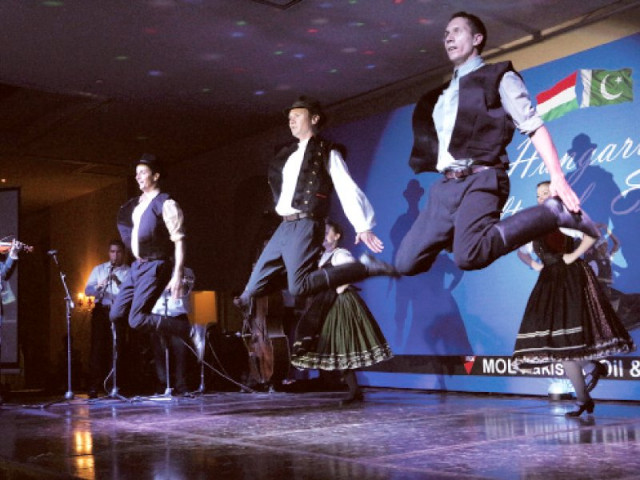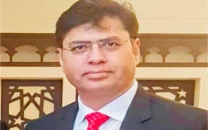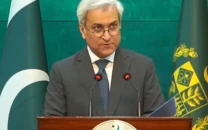Hungarian cultural evening: A fusion of lilting rhythms and dance enchant audience
Highlights include indigenous music, ethnic costumes.

The dancers perform a meticulously choreographed move. PHOTO: EXPRESS
As a tribute to the rich culture of central Europe, a cultural evening was held at a local hotel on Monday.
An acclaimed ensemble of instrumentalists, Tamás Lajos Kalás on contrabass, Gergely Dövényi on viola, Mihály Istaván Kovács on violin and Tamás Ölveczky on clarinet, horns, accordion and flute transported the audience to the enchanting landscape with their lilting, free-flowing rhythms.
Revolving around Hungarian folklore and country life, the dances were a joyous expression of mundane activities to the more opulent wedding sequences.
The dancers Anna Jani, Fabióla Kiss, Anita Mikóczy, Pál Molnár, Barnabá Szemán and Attila Vojtek displayed a strong affinity to their ethnic creations. Male dancers were attired in sleek black pants, dress shirts, jackets with straw hats, and the women in flowing, frilly frocks and gowns and embroidered bodice.
Punctuated by rhythmic claps, boot stomping and exclamations, the dances reflected varying moods and emotions as well as the strong bond that the community folk share in the countryside. While the women skipped and swayed gracefully, the men flaunted some deft, split-second moves.
The Szatmári gypsy dance engaged the men in mock combat. Instead of weapons, they used bottles and sticks as props through climactic sequences, representing harmony and tolerance. Couples moved gently in unison in Romanian dances from Elek, East Hungary.
Addressing the audience earlier, Hungarian Ambassador Istvan Szabo said, “The folk traditions and folk arts constitute great value for the Hungarian and Pakistani people. I can proudly say that you can witness a renaissance of this art in my country. We are convinced that culture is the best way of bringing people closer and understand each other better.”
Presentations on the Hungarian culture and it’s the ethnical diversity of the Carpathian lent some colourful glimpses of the distinct lifestyle, indigenous instruments such as the tarogota and Hungarian music composers Béla Bartók and Zoltàn Kodàly and the violinist János Bihari.
Once the performances concluded, the audience members were invited to dance with the performers on a dance floor in front of the stage.
Saira, an audience member, remarked that it was an enlightening to experience a slice of various cultures the same evening.
Published in The Express Tribune, June 11th, 2014.



















COMMENTS
Comments are moderated and generally will be posted if they are on-topic and not abusive.
For more information, please see our Comments FAQ